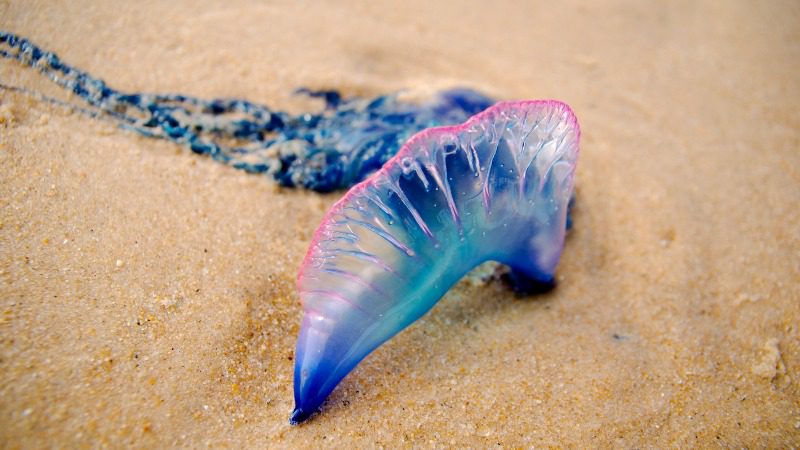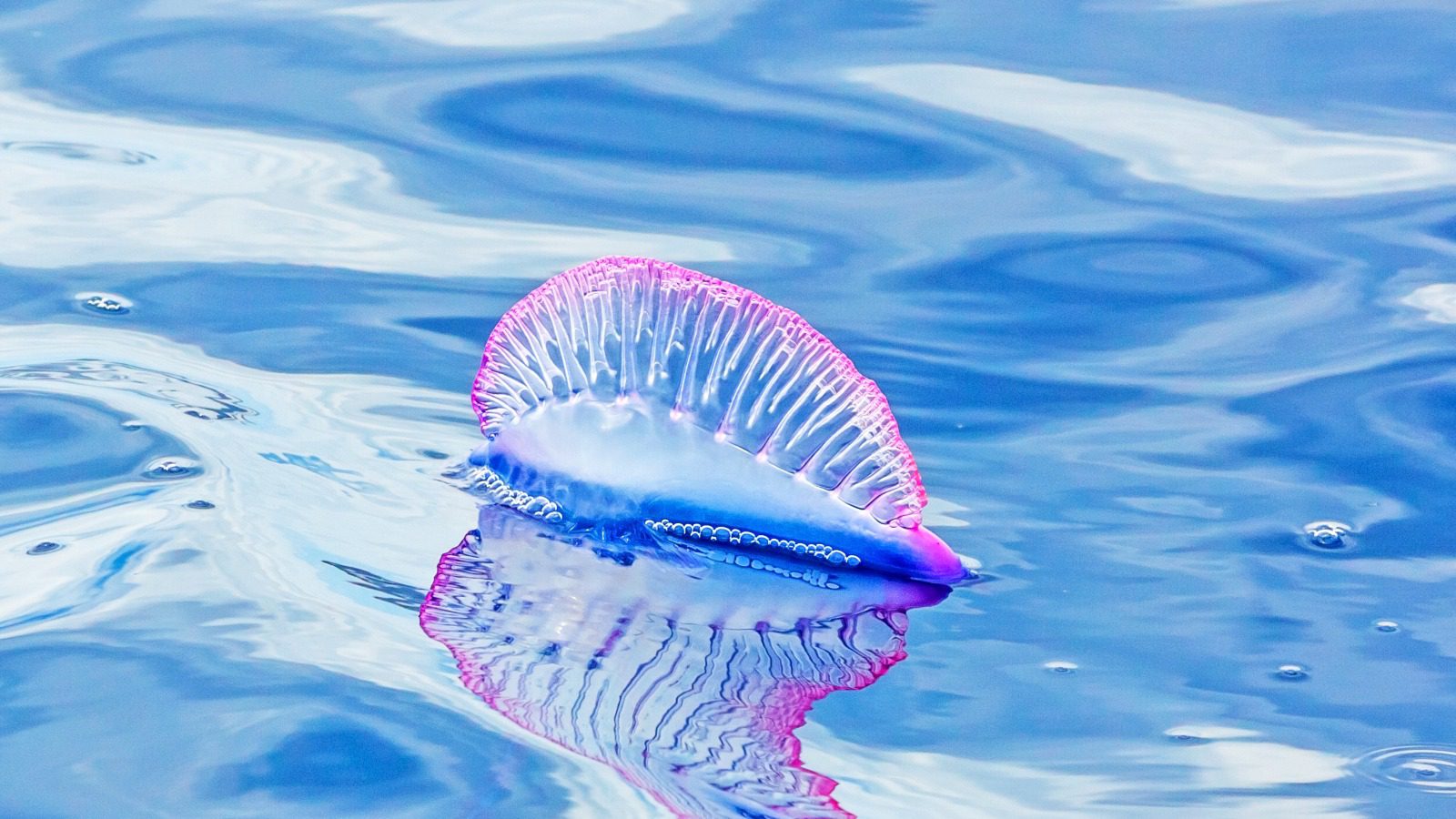In the sea off Curacao, a few times a year you have a chance for an encounter with a Portuguese Man-of-War. Perhaps a somewhat strange name for a jellyfish-like thing, but if you get pricked it will be immensely painful.
Portuguese Man-of-War, what is it?
What exactly is a Portuguese Man-of-War? It is a so-called state jellyfish, but it is not a real jellyfish. It is a complex colony of hundreds of polyps of four types, each polyp having its own task.
The body is a gas bladder averaging 10 to 35 cm in size that can be filled with air to keep the animal on the surface. You encounter the Portuguese man-of-war mostly in warmer seas. The animal is rarely spotted in the North Sea, but on average about 2-3 times a year the Portuguese Man-of-War is seen in the sea around Curacao. They can’t really decide for themselves where to go. They float with the current. The animal got its name from explorers of the 16th century. At that time, the Portuguese were the most powerful country at sea and the average sailor became frightened at the sight of a the Portuguese war fleet.
Long tentacles
A Portuguese Man-of-War is fairly easy to recognize. If you see something floating that looks like a transparent pink/purple tinted plastic bag filled with air, do not go into the sea and warn others who do swim in the sea.
The danger of a Portuguese Man-of-War is in its tentacles, which can grow 15 to 50 (!!!) meters long, averaging about 30 meters. tall. With this, mostly small fish are caught. Virtually all fish are instantly dead on contact with a tentacle, due to the poison injected directly. Therefore, because of the poison, the fish is no longer usable for consumption.
How dangerous is Portuguese Man-of-War
A touch of the Portuguese Warship to humans usually is not lethal. However, it will immediately cause tremendous pain, which can result in fever and possibly even shock and/or difficulty breathing. You may also develop blisters and sometimes, in the long run, dark-colored scars. Swimmers do occasionally die from contact with a Portuguese Man-of-War, but it is mainly because they become entangled in the tentacles, resulting in paralysis and possibly drowning.
Partly because the tentacles are so long, they can break off and float away from the animal. This will make the blue tentacles completely difficult for swimmers to see. Even with a dead or stranded Portuguese Man-of-War, the tentacles can still cause irritation.
Portuguese Man-of-War on Curacao
Fortunately, the Portuguese Man-of-War is not that common in Curacao. Usually no more often than about 2 or 3 times a year, the animal is spotted in the Curacao sea. Usually at a time when there is a bit more wind. Be careful then: once one is seen, more reports usually follow in the following days. Last reports Portuguese Man-of-War near Curacao: February 7 2024, July 14 2023, March 25 2023, November 18 2022.
Symptoms Portuguese Man-of-War
If you have been in contact with the tentacles of a Portuguese Man-of-War, the following symptoms may occur within 15 to 60 minutes:
– fever
– dizziness
– nausea/vomiting
– laborious breathing
– pain in muscles & joints, chest & abdominal pain
– accelerated heartbeat

Treatment
If you have been in contact with a Portuguese Man-of-War, seek help anyway. Because of the pain, it may become difficult to do the treatment yourself. Since, as mentioned earlier, it is not a jellyfish, there is no point in treating the spot where you were pricked with urine.
1. Remove the tentacles from your body with a stick or the like. Important: do not do this with your bare fingers and do not rub the wound!!!
2. Rinse the spot where you were pricked with vinegar.
3. Immerse your pricked area in water of 45 degr. Celsius (113 degr. Fahrenheit) or warmer. Do this for at least 45 minutes. This will flush out the stinging cells and deactivate the poison already injected.
4. Assume that the pain makes you have little desire to do anything else. Go home.
5. Take Vitamin C, 3 to 5 grams. This helps well to neutralize the poisoning. You can also make a paste out of it: pulverize the Vitamin C, and mix it with some baking soda water until you have a smooth substance. Spread the paste on the spot where you were hit. It is no problem to smear it on nice and thick, repeat by smearing about 500mg every 15 minutes for a few hours.
With this you will have a relieving effect fairly quickly, after about an hour the pain will be reduced by about 90%. Nevertheless, you should assume that you will do very little for the rest of the day.
Contact with family doctor
If you have been in contact with a Portuguese Man-of-War, then there is no immediate need, per se, to go to the Emergency Room (should you wish to go anyway: J.H.J. Hamelbergweg, Otrobanda). Perhaps it might be helpful to contact a family doctor in Curacao. For this, we recommend MedPoint Curacao (Dutch general practitioners with a focus on tourists), tel. +5999 524 2944.
If you have seen a Portuguese Warship that is probably not yet reported, contact the Ministry of Health, Environment and Nature as soon as possible.
This page was created in part with information from:
– Wikipedia
– Smithsonian Magazine
– Belgian Poison Control Center

